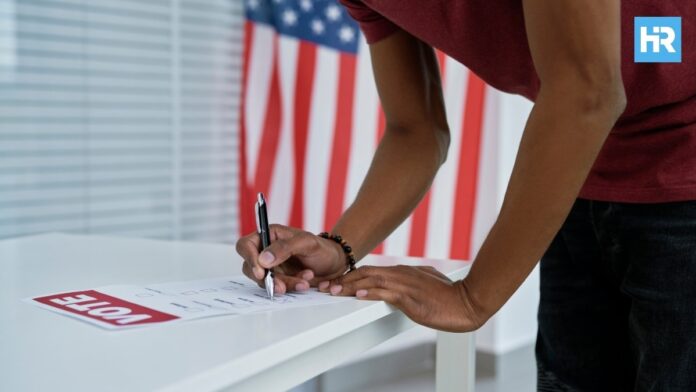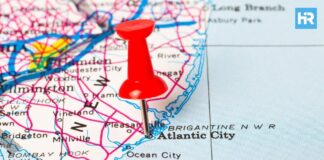Early voting is in full swing in New York, and Western New Yorkers are not wasting any time.
On Saturday, October 26, the first day of early voting, thousands of people appeared at polling stations across Erie and Niagara counties.
The turnout was impressive—lines snaked around buildings, showing how eager people are to vote this year.
The 2024 general election is shaping up to be big, with a lot at stake for the country.
New Yorkers know how important their votes are, from the presidential race to local elections.
And many voters found themselves in longer-than-expected lines despite the option to vote early to avoid long waits on Election Day.
But as many said, it’s worth the wait.
- Early voting started on October 26, 2024, and thousands of voters in Erie and Niagara counties have already cast their ballots.
- Early voting wraps up on November 3, and Election Day is November 5. Don’t miss deadlines like registering to vote or applying for a mail-in ballot.
- Voters are concerned about the economy, border issues, and American values. Read more on how these factors drive voter turnout.
Why Early Voting Matters This Year
Early voting allows people to make their voices heard before the November 5 Election Day, and this year, it’s already making a splash.
According to Erie County’s Board of Elections,18,946 people cast their ballots on the first day of early voting.
This is the highest first-day turnout since early voting began in the state, surpassing previous years by a significant margin.
For perspective, back in 2019, only about 26,500 people showed up throughout the nine-day early voting period.
So, why the rush this time?
Well, many voters say they want to beat the Election Day crowd.
But with so many people showing up, it looks like early voters are creating a crowd themselves.
Niagara County’s Republican Elections Commissioner, Jennifer Sandonato, said it best: “It’s been very busy. We had lines from the beginning. People are waiting, and we’re processing them pretty quickly as well.”
What Issues Are Bringing People to the Polls?
While early voting is all about convenience, the real motivator seems to be the issues that matter most to Western New Yorkers.
Voters shared that topics like the economy, women’s rights, and protecting American democracy are at the top of their minds.
In Niagara County, people also consider more practical concerns, such as the rising cost of groceries and the state of the U.S. border.
Ultimately, these are issues that voters hope their chosen candidates will address if they win.
Important Dates You Need to Know
Here’s a quick rundown of the most important dates for New York voters:
- October 21: Last chance to update your voter registration or change your address.
- October 26: Early voting begins! Also, the deadline to register to vote or apply by mail for a mail-in ballot.
- November 3: Final day of early voting.
- November 4: Last chance to apply in person for a mail-in ballot.
- November 5: Election Day! Polls are open from 6 a.m. to 9 p.m.
On Election Day, make sure your mail-in ballot is postmarked by November 5 or drop it off at a polling place by 9 p.m.
If mailed, ballots must reach the Board of Elections by November 12 to be counted.
Early Voting or Absentee Ballots: Which One Is Right for You?
Even with the extended early voting window, a mail-in ballot might be the best option for those who can’t attend a polling place.
Voting absentee allows you to participate without being physically present at a polling location, ensuring your voice is heard even if you’re traveling or unable to get to the polls.
Here’s what you need to know about the process:
- Requesting a Mail-In Ballot: Apply for your absentee ballot online or by mail before October 26. If you miss this deadline, you have until November 4 to apply in person at your county’s Board of Elections.
- Returning Your Ballot: Make sure your mail-in ballot is postmarked by November 5 and received by November 12 to be counted. If you prefer, you can drop it off at a polling place or Board of Elections office by 9 p.m. on Election Day.
- Double Voting is a No-Go: Remember, if you’ve already been issued an absentee ballot, you can’t vote again on a machine. But if you head to a polling place and your absentee ballot hasn’t been processed yet, you can fill out an affidavit ballot. This provisional vote will only be counted if your absentee ballot hasn’t been received.
What to Expect When the Results Start Rolling In
Once the polls close at 9 p.m. on November 5, New Yorkers will anxiously await the first wave of results.
Usually, early voting totals are among the first numbers released, offering a preview of the vote’s direction.
If you’ve been glued to your phone or computer on election nights, you know the drill: the results trickle in, and the anticipation builds.
However, it’s important to remember that not all results will be clear-cut on election night.
With absentee ballots playing a bigger role, especially in tight races, it might take several days—or even weeks—to count every vote.
This ensures that every voice is heard, even if it means a bit of a wait for those final counts.
What You Need to Know Before Heading to the Polls
If you’re heading out to vote, there are a few things to keep in mind to make the process smooth:
- Know Where to Go: Your polling place is based on your address, so double-check your location at voterlookup.elections.ny.gov before heading out.
- Identification Rules: Most returning voters won’t need to show an ID, but first-timers who registered by mail might need to bring a valid photo ID or a recent utility bill.
- Correcting Mistakes: If you make a mistake while marking your ballot, don’t worry—you can ask for a new one up to three times.
- Watch What You Wear: Leave the campaign gear at home. New York law prohibits wearing clothing or accessories supporting specific candidates within 100 feet of a polling place. However, general political messages not directly tied to a candidate may be okay.
Need Help? Voter Assistance is Available
Voting should be accessible for everyone, and New York offers help where needed.
If you have a disability or need assistance at the polls, you can bring someone with you or ask for help from a poll worker.
At the end of the day, every polling place is designed to be accessible.
If you encounter problems—like being turned away or facing voter intimidation—report them to election inspectors on-site and contact the New York Attorney General’s voter protection hotline at 866-390-2922.






